RS232 compatible pressure transducers for linking to PC computer serial ports which are provided with communications protocol commands for handshaking and retrieving sensor data, or a RS232 interface converter with a software program with features required for displaying, recording and analysing pressure readings.
RS232 serial interface pressure sensors provide a well-established solution for connecting pressure measurement instrumentation directly to PC serial ports, ideal for engineers and technicians in research, testing, and specialised industrial settings. These devices utilize specific communication protocol commands and handshaking mechanisms to ensure reliable data transfer, crucial for accurate pressure monitoring and logging. For enhanced usability with modern systems or advanced analysis, RS232 interface converters paired with sophisticated software offer features like real-time graphing, data recording, and unit conversion, making them suitable for diverse applications ranging from laboratory experiments to automated test equipment and process monitoring requiring direct computer integration.
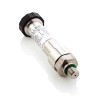 33X High Accuracy Digital Output Pressure Sensor - High precision pressure transducer with an accuracy of 0.05% full scale with a RS485, USB or RS232 digital interface for connecting to a PC.
33X High Accuracy Digital Output Pressure Sensor - High precision pressure transducer with an accuracy of 0.05% full scale with a RS485, USB or RS232 digital interface for connecting to a PC.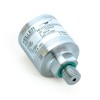 41X Low Range Digital Output Pressure Sensor - Low pressure sensor with a USB, RS232 or RS485 digital output interface for measuring low range gauge or differential pressures from 10 to 300 mbar.
41X Low Range Digital Output Pressure Sensor - Low pressure sensor with a USB, RS232 or RS485 digital output interface for measuring low range gauge or differential pressures from 10 to 300 mbar.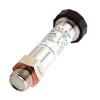 35X Flush Diaphragm Digital Output Pressure Sensor - Highly accurate digitally compensated pressure transducer with G1/2 male flush pressure port.
35X Flush Diaphragm Digital Output Pressure Sensor - Highly accurate digitally compensated pressure transducer with G1/2 male flush pressure port.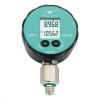 LEO3 Current or Digital Output Pressure Gauge - LCD digital pressure gauge powered externally by a 2 wire series 4-20mA current loop or a digital interface.
LEO3 Current or Digital Output Pressure Gauge - LCD digital pressure gauge powered externally by a 2 wire series 4-20mA current loop or a digital interface.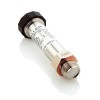 35X HTT High Temperature Compensated Pressure Sensor - Pressure sensor for applications in bio-reactors or autoclaves. The transmitter is compensated up to 150 °C and may be operated continuously or sterilised at this level, including the conditioning electronics up to 120°C.
35X HTT High Temperature Compensated Pressure Sensor - Pressure sensor for applications in bio-reactors or autoclaves. The transmitter is compensated up to 150 °C and may be operated continuously or sterilised at this level, including the conditioning electronics up to 120°C.
Find out more about RS232 Serial Interface Pressure Sensors to determine which product options and capabilities will best meet your application requirements.
RS232 serial interface pressure sensors offer a direct and reliable method for interfacing pressure measurement devices with PC computer serial ports or other compatible data acquisition systems. These transducers are specifically engineered to communicate via the RS232 standard, facilitating straightforward integration, particularly with legacy systems or custom PC-based testing rigs commonly found in research and development labs or specialised industrial test benches. The communication framework typically relies on a defined set of protocol commands, often ASCII-based, which allow a host system to query the sensor for pressure readings, status information, or configuration parameters.
Effective data exchange is paramount, and these sensors often incorporate handshaking protocols, such as hardware (RTS/CTS) or software (XON/XOFF) handshaking. This ensures data integrity during transmission, preventing loss or corruption of critical pressure data, which is especially important in applications requiring precise measurements, like calibration procedures or material testing applications. The handshaking mechanism manages the data flow, ensuring the receiving device is ready before the sensor transmits, crucial when dealing with continuous data streams or in environments prone to electrical noise.
Retrieving sensor data involves sending specific commands to the transducer, which then responds with the requested information, typically as a string of characters representing the pressure value, often accompanied by units or status indicators. The baud rate configured for the RS232 interface directly influences the speed at which pressure readings can be acquired, a key consideration for monitoring dynamic pressure changes in hydraulic systems or fast-acting pneumatic controls. Careful selection of communication parameters ensures that the data acquisition rate matches the application’s requirements.
For applications where a direct RS232 port is unavailable on modern computers, or when enhanced functionality is desired, an RS232 interface converter, frequently USB to RS232, coupled with dedicated software, provides a comprehensive solution. This accompanying software often extends beyond simple data display, offering robust features essential for detailed pressure analysis. These can include real-time graphical plotting of pressure versus time, advanced data logging capabilities with timestamping to formats like CSV for offline analysis, unit conversion utilities, configurable alarm set-points, and sometimes even routines for sensor calibration or tare adjustments. Such setups are invaluable in laboratory environments for experimental data collection or in quality control for product testing where detailed records and traceability are required. These sensors are commonly utilized in academic research labs for fluid dynamics studies, in manufacturing for leak detection systems, or integrated into custom-built machinery requiring PC-based pressure monitoring and control.
